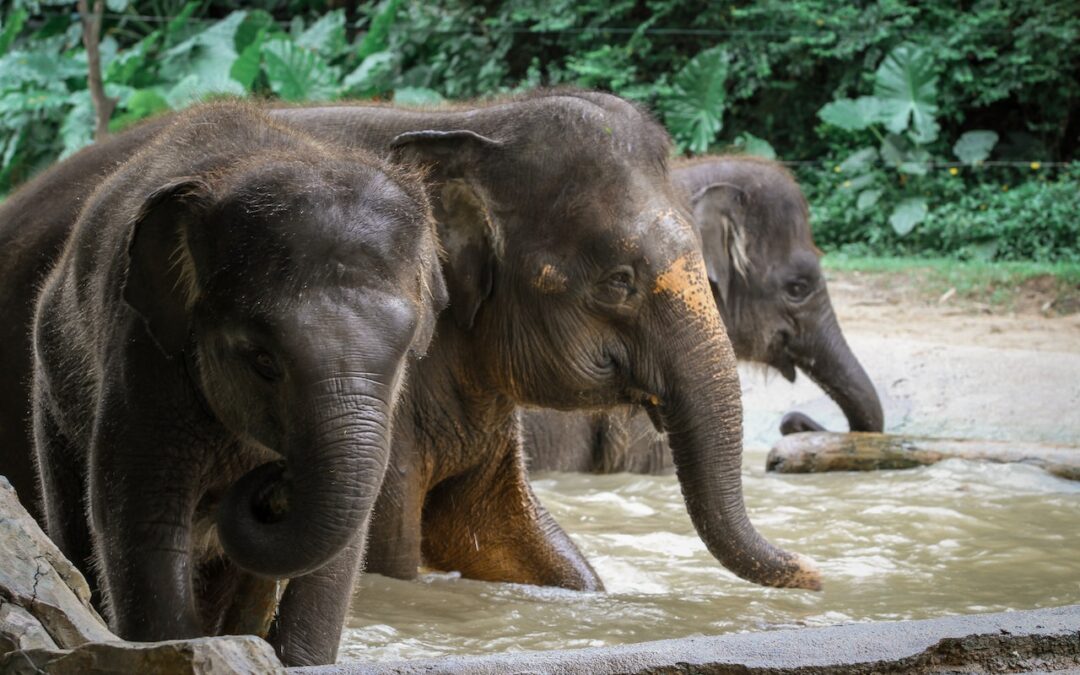Unveiling the Enigmatic Marvels: 20 Captivating Insights into Plants and Forests. Embark on an expedition to uncover the hidden treasures nestled within the captivating world of plants and forests. Prepare to be captivated by their profound significance in sustaining the delicate balance of our ecosystem, their astonishing capacity to adapt, and the invaluable benefits they bestow upon human welfare. Together, let us embark on this enlightening odyssey, delving deep into the realm of nature’s verdant custodians, and unraveling the secrets they hold.
Table of Contents
- The Atlantic Forest in Brazil, also known as Mata Atlantica, used to cover 130 million hectares. However, due to deforestation, it now occupies only 12% of its original size.
- Forests cover approximately 31% of the global land area, which amounts to about 4.06 billion hectares.
- A mature tree can absorb over 48 pounds of carbon dioxide from the atmosphere in one year through the process of photosynthesis.
- Trees redistribute up to 95% of the water they absorb through their root systems.
- There are more than 73,300 tree species in the world.
- Tropical forests store more carbon than humanity has emitted over the past thirty years through burning coal, oil, and natural gas.
- Spending time in a forest can boost immune system activity.
- Tropical forests are home to two-thirds of the world’s biodiversity, despite covering less than ten per cent of the planet.
- A single hectare of tropical forest can contain more than 480 tree species.
- Forests act as natural water filters, helping to purify and regulate water resources.
- The world’s oldest known tree is a bristlecone pine named Methuselah, estimated to be over 4,800 years old.
- The largest living tree by volume is the General Sherman tree, a giant sequoia located in California’s Sequoia National Park.
- Some plants have developed unique adaptations to thrive in extreme environments, such as the ability to store and conserve water.
- The world’s largest flower is the Rafflesia arnoldii, which can grow up to 3 feet in diameter and weigh over 20 pounds.
- Some plants exhibit nyctinasty, a behaviour where their leaves or flowers close at night.
- Forests play a crucial role in preventing soil erosion by providing root systems that hold soil in place.
- Some plants have developed symbiotic relationships with animals, relying on them for pollination or seed dispersal.
- Forests contribute to climate regulation by absorbing and storing significant amounts of carbon dioxide, a greenhouse gas.
- Some plants have developed unique defence mechanisms, such as thorns, spines, or chemical compounds, to deter herbivores and protect themselves.
- Forests are important sources of livelihood and cultural heritage for many indigenous communities around the world.
The Atlantic Forest in Brazil, also known as Mata Atlantica, used to cover 130 million hectares. However, due to deforestation, it now occupies only 12% of its original size.
Details: The Atlantic Forest has been greatly reduced over the centuries due to activities like timber extraction, sugar cane and coffee cultivation, cattle ranching, and urban expansion.
How it was discovered: The decline of the Atlantic Forest and the need for restoration efforts have been recognized over time, prompting initiatives to protect and restore this vital ecosystem. [1]
Forests cover approximately 31% of the global land area, which amounts to about 4.06 billion hectares.
Details: Forest coverage varies in different regions of the world, with over one-third being primary forests that remain undisturbed. The largest forest areas are found in five countries, and 10 countries account for about two-thirds of the global forest cover.
How it was discovered: Extensive research and mapping have been conducted to assess global forest coverage and its distribution. [2]
A mature tree can absorb over 48 pounds of carbon dioxide from the atmosphere in one year through the process of photosynthesis.
Details: Trees convert carbon dioxide and water into chemical compounds and store carbon in their fibres. This absorption of carbon dioxide helps clean the air and mitigate its negative impacts.
How it was discovered: Scientific studies have investigated the role of trees in carbon sequestration and quantified the amount of carbon dioxide absorbed by individual trees. [2]
Trees redistribute up to 95% of the water they absorb through their root systems.
Details: When it rains, tree roots absorb water, which helps reduce flooding and soil erosion. The absorbed water is then released into the atmosphere through tiny pores on the underside of leaves, contributing to the water cycle.
How it was discovered: Research on the water-absorbing and transpiration processes of trees has provided insights into their role in water redistribution. [2]
There are more than 73,300 tree species in the world.
Details: This remarkable diversity of tree species has been documented through extensive research and data analysis from forest databases worldwide.
How it was discovered: Researchers have collected data from various sources and conducted field surveys to identify and classify tree species across different regions. [2]
Tropical forests store more carbon than humanity has emitted over the past thirty years through burning coal, oil, and natural gas.
Details: The carbon stored in tropical forests makes them a crucial climate solution. Protecting mature forests and preventing deforestation helps retain stored carbon and mitigate climate change.
How it was discovered: Scientific studies have assessed carbon storage in tropical forests and compared it with global carbon emissions data. [3]
Spending time in a forest can boost immune system activity.
Details: Research has shown that spending time in a forest, also known as “forest bathing” in Japan, promotes a sense of peace, and relaxation, and improves immune system function. Essential oils released by trees and plants play a role in enhancing human health.
How it was discovered: Scientific studies and research on the health benefits of spending time in natural environments, particularly forests, have been conducted. [3]
Tropical forests are home to two-thirds of the world’s biodiversity, despite covering less than ten per cent of the planet.
Details: Tropical forests are incredibly rich in biodiversity, housing a vast array of trees, birds, plants, insects, and mammals. Protecting these forests is crucial for preserving global biodiversity.
How it was discovered: Biodiversity surveys and research in tropical forests have revealed the immense richness of species found in these ecosystems. [3]
A single hectare of tropical forest can contain more than 480 tree species.
Details: The high diversity of tree species in tropical forests is astounding, with individual hectares often hosting hundreds of different tree species.
How it was discovered: Researchers have conducted extensive field surveys and studies to document the species composition and diversity within tropical forests. [3]
Forests act as natural water filters, helping to purify and regulate water resources.
Details: Trees and vegetation in forests help filter impurities, sediment, and pollutants from rainwater, promoting a clean water supply and reducing the risk of waterborne diseases.
How it was discovered: Studies on the hydrological processes in forests and the role of vegetation in water filtration have contributed to the understanding of forests’ water purification capabilities.
The world’s oldest known tree is a bristlecone pine named Methuselah, estimated to be over 4,800 years old.
Details: Methuselah, located in the White Mountains of California, is considered one of the oldest living organisms on Earth, with its age determined through various scientific methods.
How it was discovered: The age of Methuselah and other ancient trees has been determined through dendrochronology, radiocarbon dating, and growth ring analysis.
The largest living tree by volume is the General Sherman tree, a giant sequoia located in California’s Sequoia National Park.
Details: The General Sherman tree stands about 275 feet tall and has an estimated volume of over 52,000 cubic feet, making it the most massive tree known to exist.
How it was discovered: Measurements and assessments of giant sequoias, including the General Sherman tree, have been conducted by researchers and tree experts.
Some plants have developed unique adaptations to thrive in extreme environments, such as the ability to store and conserve water.
Details: Succulent plants, like cacti, have specialized tissues that can store water, allowing them to survive in arid and desert conditions.
How it was discovered: Observations and studies of plants in extreme environments have revealed their adaptations and survival mechanisms.
The world’s largest flower is the Rafflesia arnoldii, which can grow up to 3 feet in diameter and weigh over 20 pounds.
Details: The Rafflesia arnoldii, found in Southeast Asia, is known for its distinctive foul odour and parasitic nature. It has no leaves, stems, or roots and relies on host plants for nutrients.
How it was discovered: The discovery of the Rafflesia arnoldii and its size was made through botanical exploration and documentation of plant species.
Some plants exhibit nyctinasty, a behaviour where their leaves or flowers close at night.
Details: Nyctinasty is often observed in plants such as clover, mimosa, and certain types of flowers. The mechanism behind this behaviour is not fully understood but is believed to be influenced by light changes and environmental stimuli.
How it was discovered: Observations and studies of plant behaviour, particularly the opening and closing of leaves and flowers, led to the identification of nyctinasty.
Forests play a crucial role in preventing soil erosion by providing root systems that hold soil in place.
Details: The intricate network of tree roots helps bind soil particles, preventing erosion caused by wind and water. Forests act as natural protectors of soil integrity.
How it was discovered: Research on soil conservation and erosion control has highlighted the significant contribution of forests in maintaining soil stability.
Some plants have developed symbiotic relationships with animals, relying on them for pollination or seed dispersal.
Details: Examples include flowering plants that depend on bees, butterflies, birds, and bats for pollination, and fruit-bearing trees whose seeds are dispersed by animals.
How it was discovered: Observations of plant-animal interactions and the role of animals in plant reproduction and seed dispersal have provided insights into these symbiotic relationships.
Forests contribute to climate regulation by absorbing and storing significant amounts of carbon dioxide, a greenhouse gas.
Details: Through the process of photosynthesis, trees absorb carbon dioxide from the atmosphere and store it in their tissues, helping mitigate the impacts of climate change.
How it was discovered: Research on carbon sequestration and the role of forests in climate regulation has been ongoing, providing evidence of their carbon storage capabilities.
Some plants have developed unique defence mechanisms, such as thorns, spines, or chemical compounds, to deter herbivores and protect themselves.
Details: Plants like cacti, stinging nettles, and poison ivy have evolved physical structures or chemical deterrents to defend against grazing animals and potential threats.
How it was discovered: Observations and studies of plant adaptations and interactions with herbivores have revealed their defence mechanisms.
Forests are important sources of livelihood and cultural heritage for many indigenous communities around the world.
Details: Indigenous peoples have deep connections to forests, relying on them for sustenance, medicine, shelter, and cultural practices. Forests hold significant cultural and spiritual value for these communities.
How it was discovered: The rich cultural heritage and dependence of indigenous communities on forests have been documented through ethnographic research and interactions with indigenous peoples.













0 Comments